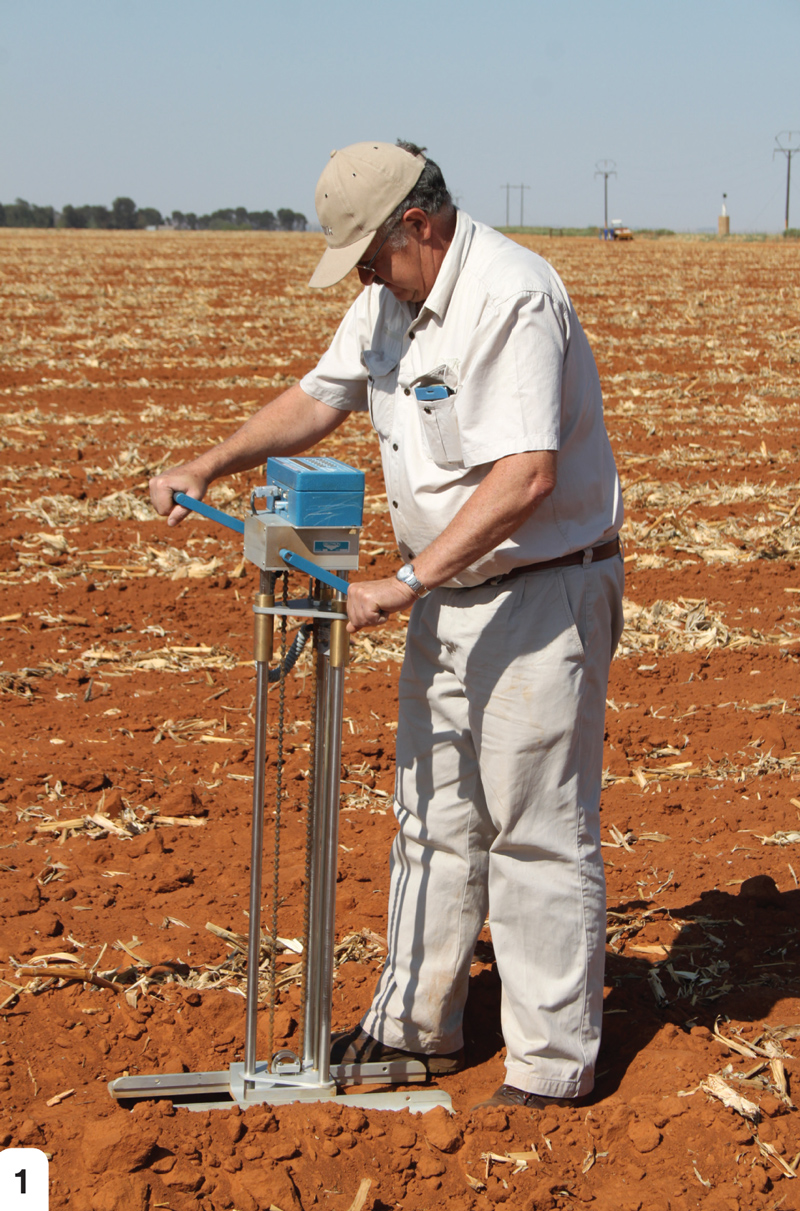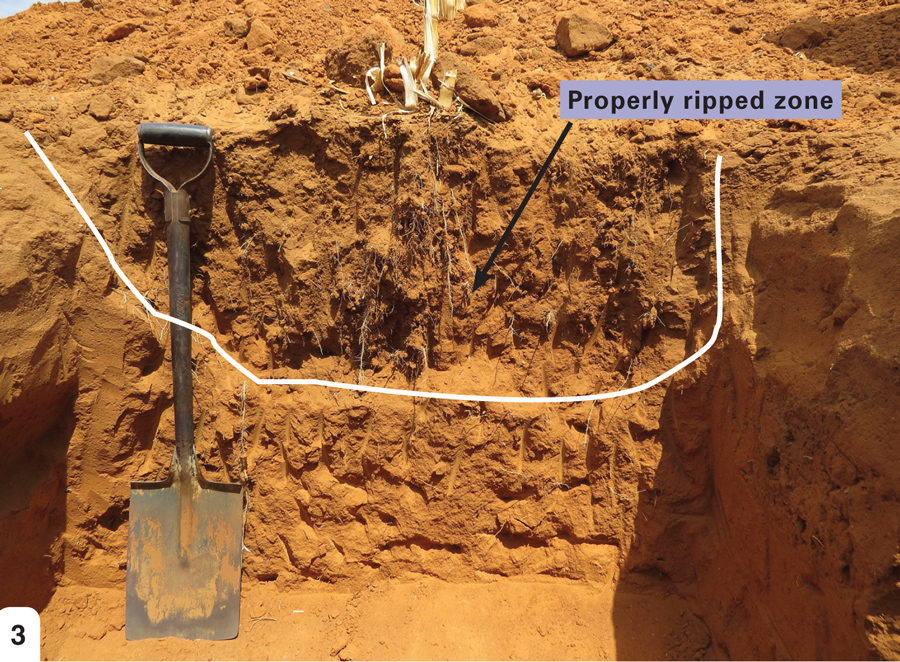October 2024
| Martiens du Plessis, soil scientist and soil and crop consultant |
 |
PLANTS NEED TO TAKE UP SUFFICIENT WATER AND NUTRIENTS FROM THE SOIL TO GROW. THIS IS THE FUNCTION OF THE PLANT’S ROOTS. THEREFORE, ROOTS NEED TO BE STIMULATED FROM DAY ONE TO GROW OPTIMALLY. THE FARMER HAS TO OPTIMISE ROOT GROWTH CONDITIONS AND THE FIRST ASPECT TO PAY ATTENTION TO, IS TO OPTIMISE SOIL CONDITIONS FOR OPTIMAL ROOT GROWTH BY MEANS OF PROPER SOIL TILLAGE PRACTICES.
Taking into account the various objectives of soil tillage, the farmer must determine which of these objectives need to be achieved in his farming system. Of course it is connected to the farm’s soil types! But first things first: Plan your tillage system in order to obtain your set goals effectively.
OBJECTIVES OF SOIL TILLAGE
Soil tillage creates a favourable structure in the topsoil
Excessive crop residues may interfere with the planting process and therefore it may be necessary to incorporate some of the residues into the soil. Lime and fertiliser being spread should also be incorporated into the soil. To achieve these objectives, a disc harrow or off-set is commonly used.
Weeds can be controlled by either a cultivator or herbicides. A combination is recommended.
Root development
One of the major objectives of soil tillage is optimal root development. The topsoil must be free of compaction layers. Since tractor wheels are the main cause of soil compaction, there must not be any wheel compaction below the crop rows.

A soil scientist performing soil compaction tests by means of a penetrometer.

Compaction layers are very common in local crop fields and are a serious crop-limiting factor. An inefficient ripping action did not lift the compaction layer.
Initially the topsoil must be loose enough for the seedling to develop its roots in the topsoil. Approximately two weeks after emergence, the roots already begin to penetrate the subsoil. When reaching the tasselling stage, the roots will reach 1,8 m plus. A well-developed root system feeds and sustains a vigorous growing plant.
A vigorous growing plant fabricates lots of photosynthate in the leaves by means of photosynthesis. The plant then translocates the photosynthate to the roots as their nutrient need, after which the roots once again take up lots of water and nutrients for the plant. Therefore, the farmer must do everything in his ability to stimulate optimal root development, and this starts by means of proper and efficient soil tillage practices.
LIFTING COMPACTION LAYERS
Compaction must be lifted effectively. It is usually done by means of deep ripping, according to the desired depth as indicated by the results of the penetrometer survey. The working depth should be 100 mm deeper than the bottom end of the compaction layer.
Tine spacing is usually too wide, resulting in ripping some furrows in the compaction layer, and not lifting it properly (Photo 2). The tine spacing should be 70% of the tillage depth, with a maximum of 400 mm. Overestimating the efficiency of rippers is very common, as many rip actions are not effective in lifting compaction layers. Digging a profile pit in the ripped sone to control the efficiency of the ripping action is highly recommended (Photo 3).
Should the compaction layers occur within the top 200 mm of the soil and not any deeper, it can be alleviated by means of a mouldboard plough or a proper chisel plough action. It is very important to control the working depth of these actions, making sure that the desired working depth is actually reached.

A profile pit indicating a well-developed root system after an efficient ripping action.
SECONDARY TILLAGE ACTIONS
After the primary tillage action is done, secondary tillage actions will be needed. In the case where the primary tillage action was done directly after harvesting the previous crop, weeds will emerge after the first spring rain. Weed control must be done, by either spraying a herbicide or by means of a cultivator. Spraying, rather than a mechanical action, results in less tracks in the field and is preferred.
The next action is to prepare a seedbed free of any weeds. It is highly recommended that this action is done on the exact tracks of the planter tractor to follow. It will be necessary to fit markers on the cultivator right on the tractor’s tracks, for the planter to follow these marked tracks. This practice is to prevent compacted tracks on areas where the crops will be planted.
The next action is planting on the marked tracks. Directly after planting, herbicides should be sprayed with the tractor once again driving on the established tracks. Perform the necessary actions to control weeds until the crop is too high for a tractor to pass.
CONCLUSION
It is important to determine the objectives you want to achieve with the tillage action. Determine the depth needed of the primary tillage, especially the presence of compaction layers, which may need deep ripping. Controlling whether the objectives are actually achieved, is equally important.
It is advisable to make use of a soil scientist or agronomist to determine the tillage actions needed, especially to identify compaction layers and the desired ripping depth. Also check the root development during the growing season to determine any other factors
limiting it.
Publication: October 2024
Section: Pula/Imvula